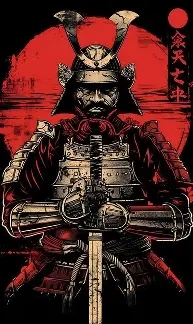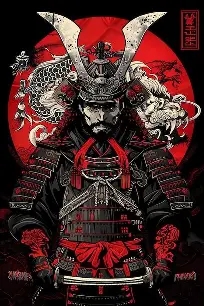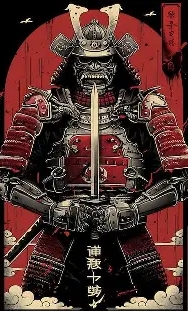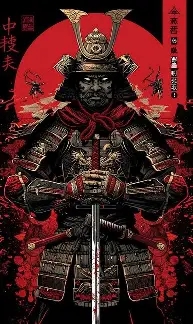Samuri Rankings
Daimyo

In feudal Japan, the daimyo were powerful warlords who ruled vast lands and commanded private armies of samurai, the elite warrior class bound by a strict code of honor known as bushidō. Each daimyo governed their domain with relative autonomy, though they pledged loyalty to the shogun, the military dictator who held ultimate authority. The daimyo's wealth and influence were measured by the size of their rice-producing lands, and their strength was enforced by the loyalty and martial prowess of their samurai retainers. In return for protection and status, the samurai swore fealty to their daimyo, serving not only as soldiers but also as administrators and enforcers of law. Together, the daimyo and samurai formed the backbone of a rigid social hierarchy, shaping centuries of Japanese politics, warfare, and culture.
Goshi

The gōshi were a lesser class of samurai in feudal Japan, often referred to as “country samurai” or rustic warriors. Unlike the higher-ranking samurai who served directly under a daimyo in castle towns, gōshi lived in rural areas and typically farmed their own land. Though they held samurai status and the right to bear swords, many gōshi had limited political influence and fewer privileges. They often lived modestly, balancing martial duties with agricultural work. Despite their lower standing, the gōshi retained a deep sense of pride and loyalty to the warrior code, maintaining their identity through discipline, swordsmanship, and service when called upon by local lords. Their existence reflected the complex layers within the samurai class and the changing role of warriors in Japan’s evolving society.
Gokenin

The Gokenin were a class of vassal samurai who served directly under the shogun during Japan’s Kamakura and Muromachi periods. Unlike the powerful daimyo, Gokenin held lower status and smaller landholdings, but their loyalty was crucial to the military government. In return for their service—often in battle or as local administrators—they were granted protection, land rights, and status within the warrior class. Bound by duty and allegiance, Gokenin played a vital role in maintaining the authority of the shogunate, forming a loyal retainer network that upheld law, collected taxes, and defended the realm. Over time, as the power of local lords grew and central control weakened, the influence of the Gokenin declined, but their legacy remains as key figures in the structure of feudal Japan.
Ronin

The rōnin were masterless samurai, warriors who had lost their lords due to death, disgrace, or political upheaval. In a society where loyalty and service defined a samurai’s identity, becoming a rōnin was both a personal and social fall from grace. No longer bound to a daimyo, rōnin wandered the land in search of purpose, employment, or redemption. Some became mercenaries, bodyguards, or even outlaws, while others upheld the code of bushidō despite their exile. Though often viewed with suspicion by society, the rōnin embodied a unique kind of freedom and resilience—symbols of both the strength and fragility of the samurai spirit in a changing Japan.
Hatamoto

The Hatamoto were elite samurai retainers who served directly under the shogun, occupying a prestigious position within the warrior hierarchy of feudal Japan. Literally meaning "bannermen," Hatamoto stood at the figurative and sometimes literal side of the shogun in battle and court. Trusted for their loyalty and skill, they acted as bodyguards, administrators, and military commanders, often overseeing key territories or missions on behalf of the shogunate. Unlike lower-ranking samurai, Hatamoto had the privilege of direct audience with the shogun, a rare honor that reflected their importance. Though they varied in wealth and responsibility, all Hatamoto were bound by duty, honor, and proximity to power—forming a critical inner circle within the Tokugawa regime.
Shogun

The Shogun was the supreme military ruler of feudal Japan, holding more real power than the emperor for much of the country’s history. As the head of the samurai class, the shogun commanded the loyalty of powerful daimyo and their armies of warriors. Appointed by the emperor in name, but ruling in practice, the shogun maintained order, enforced law, and oversaw foreign and domestic policy. Under his leadership, the samurai served not just as soldiers, but as bureaucrats and enforcers of the shogunate’s authority. From the rise of the Kamakura Shogunate in the 12th century to the peaceful rule of the Tokugawa Shogunate, the role of the shogun defined the political and military structure of Japan for over 600 years—uniting the country through the sword and the code of bushidō.
